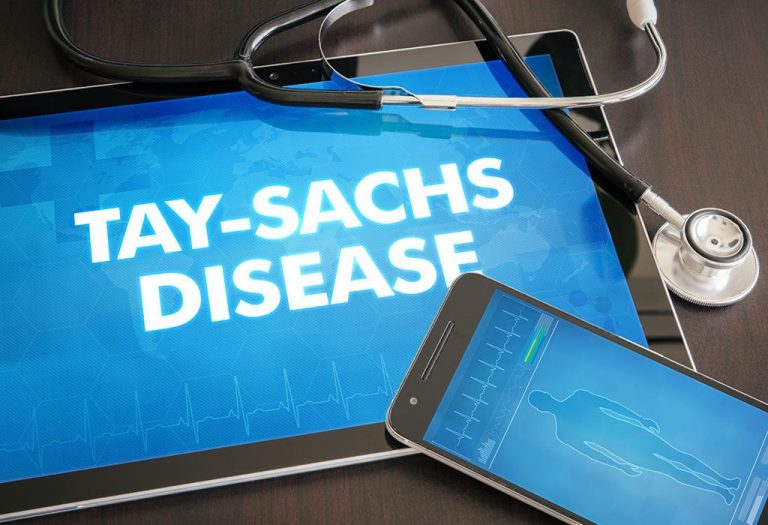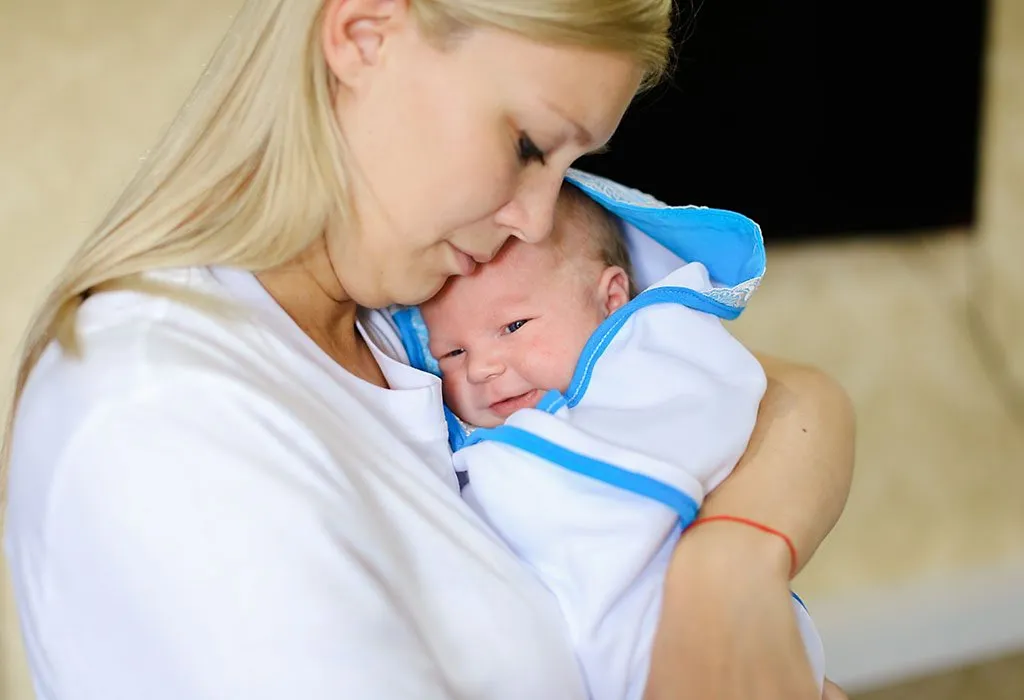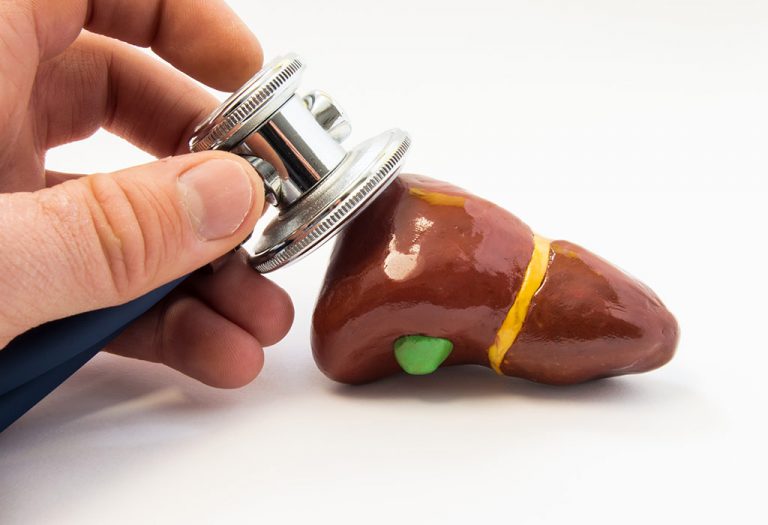Tay-Sachs Disease: Symptoms, Causes, Treatments & Prevention

The health of a baby is of utmost importance to his parents. However, some conditions, such as ‘Tay-Sachs’, a rare genetic disorder, can turn their world upside down (1). Although it is best to consult an expert to know what such conditions are and how parents can help their babies manage them, reading and educating oneself will prepare them to ask the right questions and seek in-depth guidance. In this article, we touch on the important points of Tay-Sachs disease, its causes, diagnosis, and prevention. Read on to know more.
What Is Tay-Sachs Disease?
Tay-Sachs is an inherited neurodegenerative disorder that is passed down from parents to a baby. A child gets this disease if he inherits the genes from both parents. In babies, it is a rare and progressive disease with fatal outcomes. It is triggered when the hexosaminidase A enzyme, responsible for breaking down fatty constituents called gangliosides, is missing. Gangliosides are essential for the normal development of the nervous system and the brain. Normally, they are continuously broken down by hexosaminidase A enzyme to maintain an appropriate balance. But in Tay-Sachs disease, this enzyme (necessary for the removal of excess gangliosides) is absent. The absence of this enzyme leads to the accumulation of gangliosides in the brain, which hinders nerve functioning and results in the symptoms of the disorder (2).
Different Forms of Tay-Sachs Disease
There are three forms of Tay-Sachs. Let’s take a look at each one of them.
1. Classic Infantile
The most common form of Tay-Sachs is classic infantile. It normally manifests in babies around the age of six months, after which their development slackens. They may have vision and hearing loss also, along with other symptoms. Babies with a serious infantile form of the disorder usually survive only till early childhood (3).
2. Juvenile-Onset
Children with juvenile-onset Tay-Sachs disease develop symptoms between two to ten years of age. The signs resemble those of Classic Infantile Tay-Sachs, but they are milder. Thus, The progression of the disease is quite slow, develops gradually and may result in death anytime between 5 and 15 years.
3. Late-Onset
The symptoms of late-onset Tay-Sachs disease begin between adolescence and the mid-30s. However, in some cases, they can also begin developing in late childhood. This form of the disease is extremely rare and mild compared to the other two. Therefore, the life expectancy of people with this disorder may differ from individual to individual.
Causes of Tay-Sachs Disease
Here are some of the causes of the disease:
- A mutation or change in the HEXA (a sub-unit of hexosaminidase A) gene prevents the body from producing hexosaminidase A enzyme. Lack of this enzyme causes the build-up of fats called gangliosides in the brain, affecting the working of the nervous system and causing the disease (4).
- In case a child inherits two flawed HEXA genes, one each from the father and the mother, he develops Tay-Sachs. In case a child gets one mutated gene and the other normal gene, he turns out to be a carrier. He may not be affected by the disease but will carry the flawed gene and is likely to pass it down to his offspring (5).
Symptoms of Tay-Sachs Disease
Since symptoms of Tay-Sachs disease depend on the type of Tay-Sachs it is, we have given some common symptoms of Classic Infantile Tay-Sachs and juvenile-onset and late-onset Tay-Sachs separately below.
Common Symptoms of Infantile Tay-Sachs Disease
Some of the common symptoms of Infantile Tay-Sachs disease are (4):
- Overstated startle response to loud noises
- Loss of hearing ability
- Loss of peripheral vision
- Muscle cramps
- Muscle weakness
- Diminishing mental function
- Eye developing a cherry-red spot
- Slurred speech
- Lack of muscle coordination
- Lack of coordinated movements while crawling, turning over, and sitting up
Common Symptoms of Juvenile-Onset and Late-Onset Tay-Sachs Disease
The symptoms of juvenile-onset and late-onset Tay-Sachs disease may greatly vary from person to person. Some of them can be:
- Difficulty in breathing and swallowing
- Unsteady gait
- Loss of vision
- Seizures
- Paralysis
- Cognitively impaired
Diagnosis and Tests of Tay-Sachs Disease
Prenatal tests, like chorionic villus sampling (CVS) and Amniocentesis, may help in the diagnosis of Tay-Sachs disease. CVS is usually done between 10 to 12 weeks of gestation and involves extracting some cell samples from the placenta through the abdomen or vagina. Amniocentesis is generally conducted around 15 to 20 weeks of gestation. It involves taking out some fluid encircling the foetus with a needle through the mom’s belly. This test can also reveal the incidence of the disorder. Genetic testing of the parents can also be carried out to determine if they are the carriers of Tay-Sachs disease (6).
In case a baby seems to be displaying the symptoms of the disease, the doctor may first inquire about the family history. He may also conduct a physical eye examination of the child to check for a cherry-red spot, which is one of the characteristic symptoms of Tay-Sachs (7). He may suggest an enzyme analysis of the baby’s tissue or blood samples to examine the existence and levels of ‘hexosaminidase A’ to confirm the presence of the disorder. The levels are absent or reduced in Tay-Sachs disease.
Treatment of Tay-Sachs Disease
There is no cure for Tay-Sachs disease (8). However, certain treatments can help one deal with its symptoms. For example, anti-seizure medicines can be prescribed to control tremors. Other supportive treatments may include the use of chest physiotherapy to remove excess mucus formation from the child’s lungs to ease breathing problems (9).
In case a child develops difficulty in swallowing food or liquid, the doctor may suggest a gastrostomy tube, which is a feeding device that can be put through a child’s nose to reach his stomach. Alternatively, an esophagogastrostomy tube can also be surgically placed to enable proper feeding. An affected child may derive some comfort from physical therapy or massages which can help maintain the flexibility of joints and muscles to promote as much movement as possible.
Prevention of Tay-Sachs Disease
It may be difficult to prevent the incidence of infantile ‘Tay-Sachs’ disease as it is hereditary. Screening tests like amniocentesis or chorionic villus sampling (CVS) of pregnant women can prove helpful in detecting the carriers of the disorder. Diagnostic blood tests are another way to find out if the expectant parents are both carriers or not. Once the disease is diagnosed, you can ask your doctor what can be done.
In case you have a family medical history of Tay-Sachs disorder and intend to have children, it is advisable that you go for genetic counselling and genetic testing. For babies with Tay-Sachs disease and their families, many palliative care programs are available which help provide necessary support and quality of life.
References/Resources:
1. MedlinePlus – Tay-Sachs disease
2. Nemours KidsHealth – Tay-Sachs Disease
3. Mayo Clinic – Tay-Sachs disease
4. Cleveland Clinic – Tay-Sachs Disease
5. BetterHealth Channel – Tay-Sachs disease
6. National Organization for Rare Disorders – Tay-Sachs Disease
8. Child Neurology Foundation – Tay-Sachs Disease
Also Read:
Roseola (Sixth Disease) in Babies
Congenital Heart Disease in Infants
Common Baby Health Problems and Diseases
Hand, Foot and Mouth Disease (HFMD) in Babies
Slapped Cheek Syndrome: Reasons, Signs & Treatment
Was This Article Helpful?
Parenting is a huge responsibility, for you as a caregiver, but also for us as a parenting content platform. We understand that and take our responsibility of creating credible content seriously. FirstCry Parenting articles are written and published only after extensive research using factually sound references to deliver quality content that is accurate, validated by experts, and completely reliable. To understand how we go about creating content that is credible, read our editorial policy here.
























